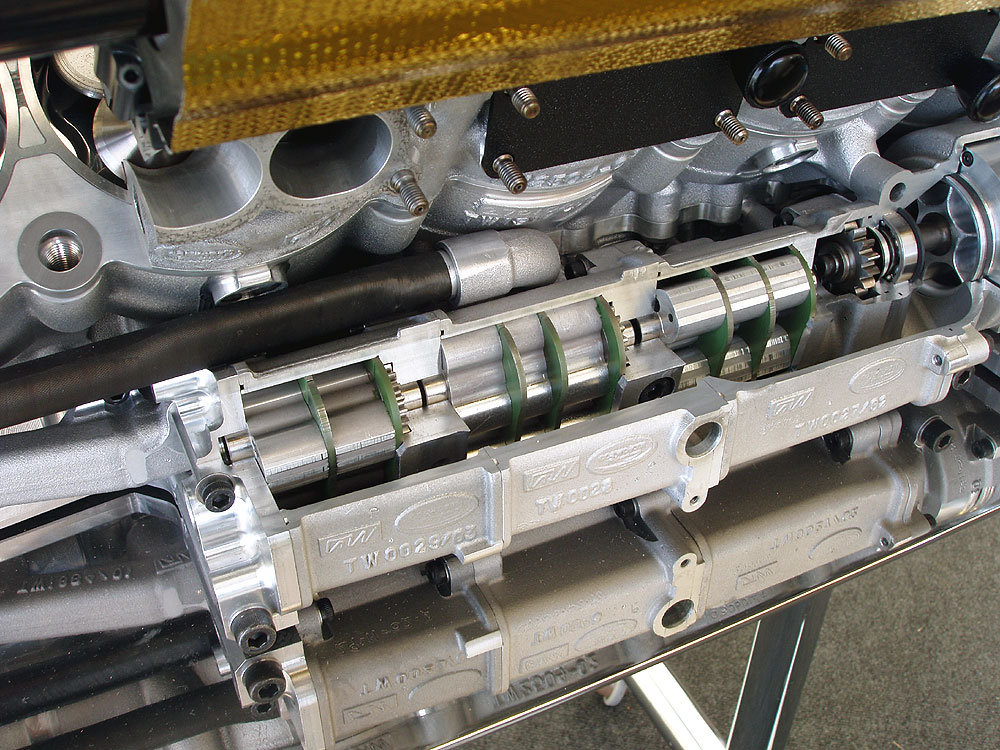I am wondering if any F1 engines use electric drive water pumps or electric drive oil pressure and extraction pumps.
the theoretical advantage would be that good flow and pressure could be available at idle and not so much energy or parasitic losses at high revs .
To my knowledge, no F1 engine is using electric driven or variable displacement pumps. The gains at high speed and load would be small compared to a properly designed and sized mechanical pump. The 700 or so watts the permanent magnet alternators can deliver wouldn't last long if we're going to use electric pumps, certainly with regards to the oil pumps which needs a few kW at speed. Variable displacement is probably a more realistic approach at least for the oil pumps, but such a pump will end up heavier and bulkier than a conventional pump.
I think there are bigger gains to be had elsewhere. For instance, it is possible to reduce power consumption of the oil pump by reducing the oil flow and pressure requirement of the engine (smaller bearing clearances, better oil supply to the crankpins). This will also reduce the amount of oil in the crankcase, which will have a positive impact on churning losses which is probably a greater concern at F1 speeds than pump losses. It is also possible to reduce the power usage of the oil pump by running a larger displacement pump slower, better oil quality (less foaming) is an added bonus.
I'm curious if that's true (pressure and volume needs increase with engine speed)? I haven't read anything one way or the other beyond there being an optimum.
If we talk about oil, the flow and pressure need increase slightly with engine speed. But modern engines can also use oil for hydraulic purposes, like controlling cam phasing which will complicate matters.
For a production engine it is usually hot idling that is limits pump size, as flow demand will increase with increased oil temperature while the flow of the pump is more or less linear with pump speed.
I drove past a wheel loader on the road to work here the other day and it had a hydraulic motor to drive the cooling fan. I found that odd given a electric motor would last longer.
Not very odd at all. All construction machinery like wheel loaders are equipped with powerful hydraulic pumps but not an alternator powerful enough to power a suitable fan. Some machines, like excavators even use hydraulic motors for propulsion, so life expectancy of the fan motor isn't really a concern.
As a matter of interest what do they currently use on F1 cars? The lower level cars all use production based units. F1 is seldom real or commonsense. Though sometimes that is the object ofcourse.
They use bespoke centrifugal coolant pumps. Oil pumps consist of a gear or gerotor pressure section with relief valve and gerotor or roots scavenge pumps with a centrifugal air oil separator. There is typically one or two scavenge pumps per crankcase and separate pumps for the heads and geartrain.
The coolant pumps (typically one or two) probably have simpler shaft seals than production units, but the pump itself is designed for better performance and less for low production costs (you won't find any stamped steel rotors like in mass production units).





















